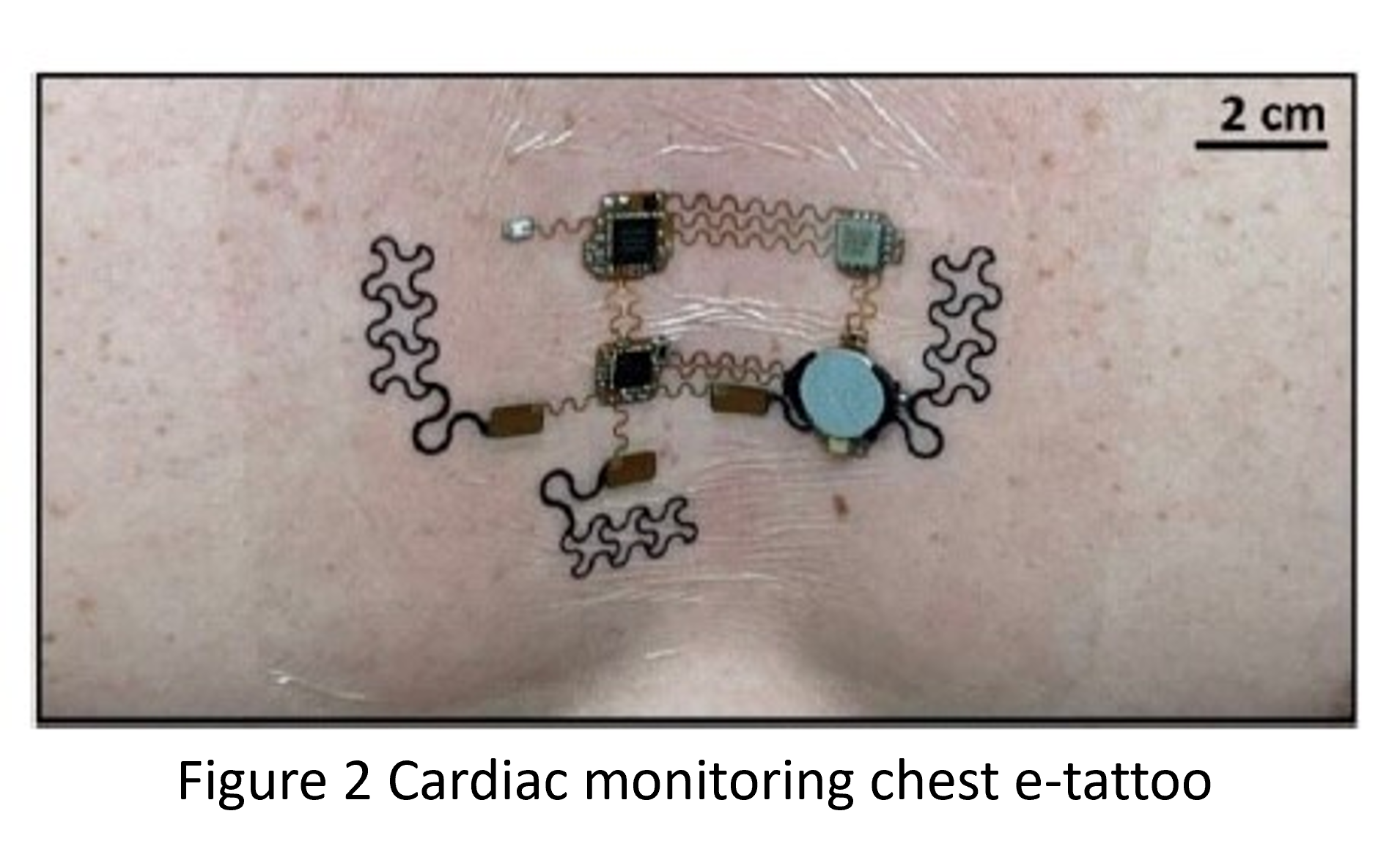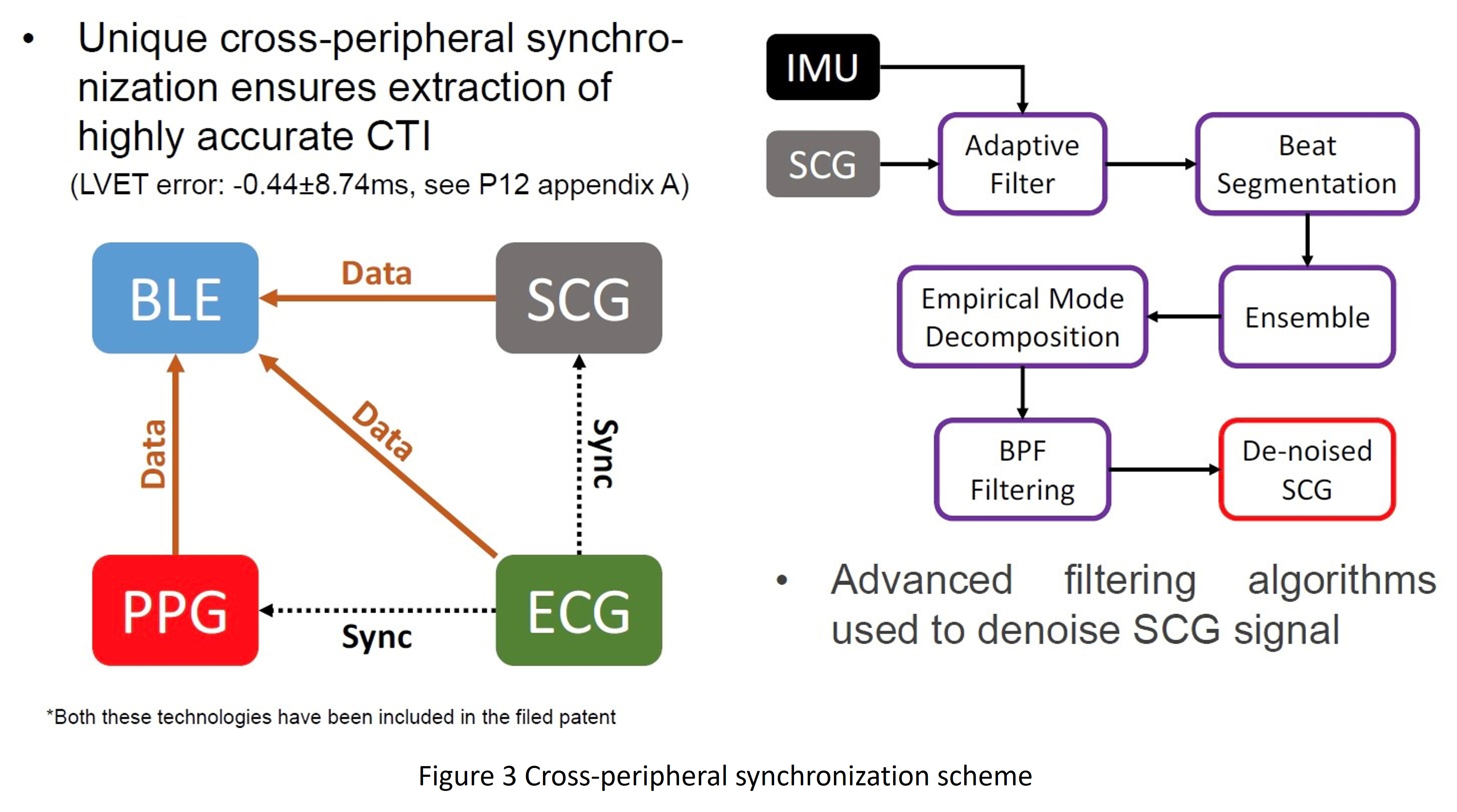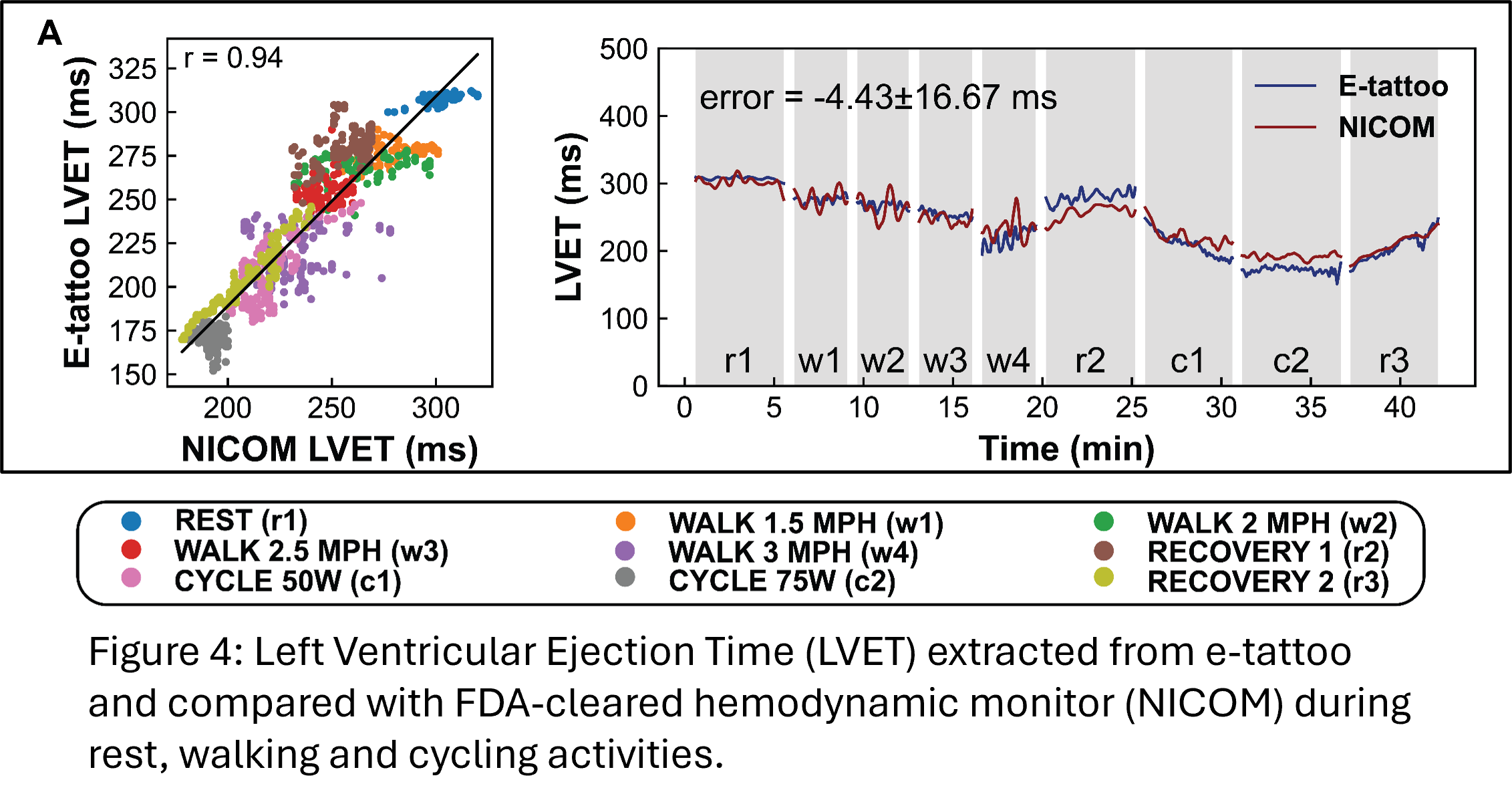Background
Cardiovascular diseases (CVD) are the leading cause of death in the United States and the world, with hundreds of billions of dollars spent on treating CVD. Heart diseases kill 700,000 people in the United States and nearly four million in the world every year. Early-stage discovery of CVD is critical to treatment preventing fatalities and reducing expense. Wearable, ambulatory cardiovascular monitoring is crucial for the early detection of CVD.
There are multiple ambulatory devices for cardiac monitoring in the market today but they have major disadvantages, such as providing only electrocardiogram (ECG) monitoring, which gives an insight into the electrical activity of the heart but not the mechanical performance. In some cases, heart failure can still occur even if the ECG is not abnormal. Additionally, the available devices are rigid, bulky, and not comfortable to wear which negates continuous cardiac output monitoring.
Low cardiac output syndrome (LCOS) is a condition that is observed most in patients after cardiac surgery. Seven percent of adults develop LCOS after cardiac surgery with a mortality rate near 20%. About 25% of children and 40% of infants develop LCOS after congenital heart disease (CHD) surgery, with 40% mortality.

Continuous cardiac output monitoring after surgery enables early detection of LCOS, but there is no wearable cardiac output sensing device available. The gold standard for cardiac output monitoring is thermodilution via an invasive pulmonary artery catheter (PAC) for intermittent thermodilution. See Figure 1. Current non-invasive methods, including CO2 rebreathing and bio-impedance, are expensive and require excessive set-up or connections—impractical for critical care or long-term monitoring.
Technical description
Researchers at The University of Texas at Austin have invented a non-invasive multi-modal, wireless chest e‑tattoo for the ambulatory monitoring of cardiovascular health. See Figure 2.

The stretchable, thin, and lightweight chest laminated e-tattoo employs multi-modal sensing via electrocardiogram (ECG), seismocardiogram (SCG), photoplethysmogram (PPG) and temperature sensing. This approach allows the device to monitor both electrical (EEG) and mechano-acoustic (SCG) activity of the heart. Optical (PPG) sensing is used to monitor the vasculature and estimate the BP via cardiovascular timing intervals.
The soft, thin, light, stretchable form factor makes the device unobtrusive and comfortable to wear for long durations and in most social settings. Synchronized ECG, SCG, and PPG sensing enables more holistic cardiovascular monitoring with wireless streaming capability via Bluetooth low energy (BLE) for real-time data analysis and diagnosis.
The novel synchronization scheme between sensors ensures perfect data synchronization and allows for ultra-low power device operation. The software processing pipeline performs a unique cross-peripheral synchronization ensuring extraction of highly accurate cardiac time intervals (CTI). See Figure 3. Cardiac events such as QRS complex, valve openings (AO) and closings (AC) can be detected that enable the measurement of important cardiac time intervals like pre-ejection period (PEP) and left ventricular ejection time (LVET), all indicators of cardiac health.

Features
- Low cost, lightweight (2.5g total mass), thin with an effective thickness (without battery) of 1mm
- Stretchable up to 20% without getting damaged
- All sensing, computation and wireless systems are integrated into the device.
- Standard off-the-shelf integrated circuit components
- Biocompatible graphite based dry electrodes allow ECG monitoring for days without degradation in signal quality or any skin irritation.
- Recyclabl
Benefits
- Non-invasive, trimodal, wearable, tattoo-like device for continuously measuring CTIs
- One-piece sticker-like device can be applied onto the patient in minutes.
- Long-term, comfortable, mobile monitoring of cardiovascular (QRS complex, PEP, LVET) and hemodynamic parameters (HR, BP). See Figure 4 and Figure 5.
- Wireless (BLE) capability allows for easy integration into other monitoring platforms, including mobile health apps.



